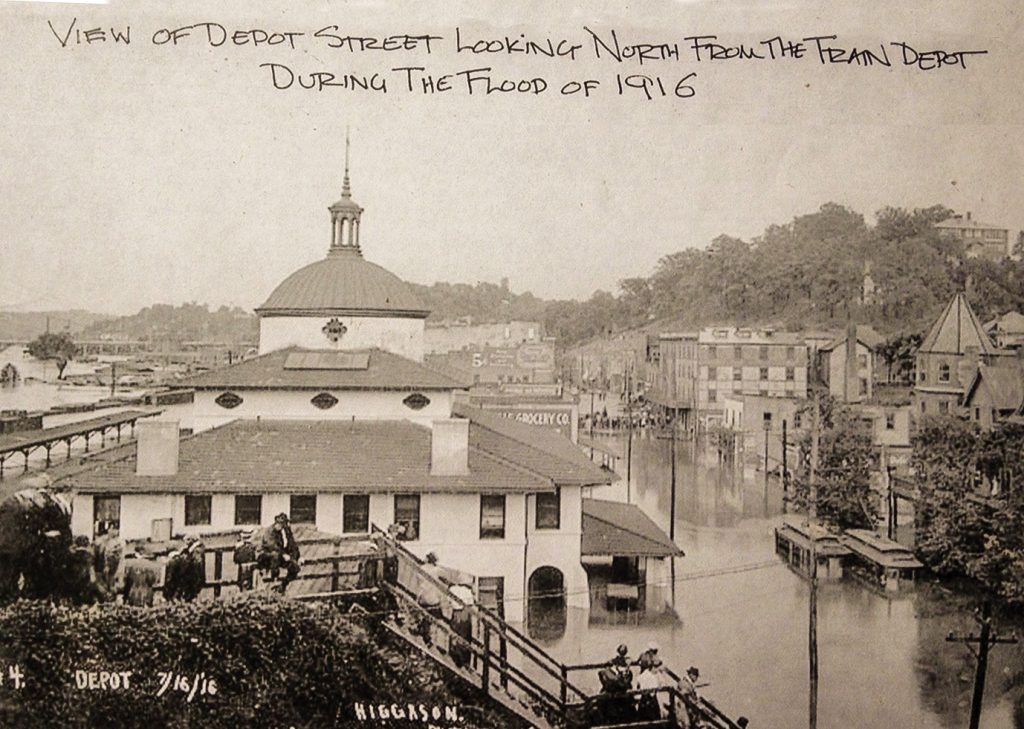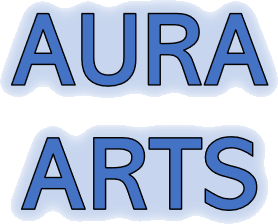
A Legacy of Creativity
The River Arts District (RAD) in Asheville is renowned for its creative community of hundreds of artists. Situated along the historic French Broad River, one of the oldest rivers in the world, and surrounded by ancient mountains, the district has a rich history that infuses its vibrant spaces.
Before the Artists
- French Broad River: Flows along the western boundary of RAD, 320-340 million years old. It is one of the three oldest rivers in the United States, and one of the five oldest in the world.
- Cherokee Heritage: Inhabited the area for at least 10,000 years, integral to their livelihood and religion.
- Named “Tahkeyostee” (racing place) by the Cherokee.
- Displaced in 1838 during the “Trail of Tears,” by settlers and industry. Their descendants remain as the Eastern Band of Cherokee Indians living on a small fraction of the land they once called their own.
- Early Settlers: Arrived in the late 1600s and 1700s, primarily English, Scotch-Irish, and German.
- Settlers primarily had small family farms, although some larger farms did enslave African Americans.
- Post-Civil War: Bond funds were raised to extend the railroad from Morganton across Blue Ridge mountains into Asheville. Railroads built largely by African American convicts, and to ensure an adequate workforce, people were easily convicted of laws such as theft of any farm animal over $1 or the crime of not being employed.
- The river and railroad created an industrial hub.
Industrial Era
- Industries: Stockyards, tanneries, cotton mills, meat processing plants, shoe and furniture factories.
- Railroad Construction: The river and railroad created an ideal setting for industry. Home to stockyards and the 30 buildings of the Hans Rees & Sons tanneries; the numerous buildings of the Asheville Cotton Mills producing denim and flannel; meat processing plants; factories producing shoes, furniture, other goods, and an icehouse.
- 1916 Flood: Led to the closure of some companies, with new businesses emerging further up the hill.
- Earle-Chesterfield hatchery and Farmer’s Federation egg processing plant opened uphill.
Urban Renewal
- 1960s-70s: Urban renewal led to the closure of many black-owned businesses and displacement of communities.
- The egg processing plant was later bought by Matthew Bacoate, Jr., who operated MB disposables, creating disposable textiles, such as gowns and masks used in health care. At that time, it was the largest black-owned business in Asheville.
- His business closed with the urban renewal movement of the 1970s.
- In the East Riverside area, which includes what is now the River Arts District, counted over 1000 homes, seven churches, and more than 60 black-owned businesses — including grocery stores, laundromats, beauty parlors, barber shops, funeral homes, cabinet shops, gas stations, a hotel, a hospital, and doctor’s offices — were condemned or demolished.
Birth of the Arts Community
- 1985: Artists began moving into the RAD. See below for the history of each zone.
- 1994: The Odyssey Center hosted the first “Studio Stroll,” attracting visitors to the industrial area.
- Highwater Clays funded and organized these strolls for four years before handing over to the artist committee, River District Artists.
- 2005: The mile-long section along the French Broad riverfront was officially named the River Arts District, following advocacy by artists and building owners.
- 2013: Approximately 80 artists of the RAD voted to incorporate as River Arts District Artists, Inc. (RADA), a non-profit member organization which now over 300 members. RADA seeks to be a voice for the artists locally and regionally related to marketing as envisioning the future.
Historical Map by Zones
Blue Zone: The Tannery
- 1898: Hans Rees & Sons built 30 buildings on 22 acres for tanning leather belts, processing 30,000 pounds of cattle hide daily.
- 1990: Helaine Green and Trudy Gould rented space in a tannery building (built in 1902), later purchasing it in 1996 for their business Candle Station.
- 2004: Candle Station was closed and the building was renamed Riverview Station, and they created over 100 studios for artists.
- Present: The area between Riverview Station and the railroad tracks is now called “The Foundation,” with Foundy Street connecting workspaces and studios for artists at Foundation Woodworks, Foundation Studios, Marquee, restaurants, a brewery, a movie theater, and a skate park.
Orange Zone: Utilities
- 1901: Warehouse Studios building is built by Williams Feed Company.
- 1916: Curve Studios and Garden was built as a Standard Oil Company distribution center.
- 1987: Warehouse Studios is purchased by Porge & Lewis Buck and officially renamed Warehouse Studios.
- 1989: Artist Pattiy Torno bought the buildings, initially opening a punk rock club (Squash Pile) ,and later transforming the spaces into live/work studios for artists.
- 2004: After Hurricane Francis, the spaces were altered into retail/work spaces featuring Pattiy’s clothing designs, multiple artists, and Silver River Chairs & museum upstairs.
- 1992: Warehouse Studios is acquired by RiverLink for offices and artist studios.
- 8 River Arts Place: Originally an electric company building over Bacoate Creek, which was restored by the City of Asheville. Now the space is leased by Black Wall Street Asheville, a non-profit organizing working to help start, grow, and support black-owned businesses.
Green Zone: The Cotton Mill & Village
- 1887: The Cotton Mill was built by C.E. Graham, who owed multiple buildings in the area, for producing denim and flannel. The mill was bought later by Moses and Cesar Cone, who sold quality to denim to companies such as Levi’s.
- 1905: Mills and Silos in the area of The Hatchery date back to at least this time.
- 1891: Riverside Studios appears on a 1891 map as a general store.
- 1940: The former Riverside Studios building is replace by a new building.
- 1953: The Cotton Mill is closed.
- 1955: A fire destroys most of the Cotton Mill, and The Hatchery was build as part of the Earle-Chesterfield Mill Company.
- 1958: 99 Riverside is built as a storage warehouse.
- 2003: Marty & Eileen Black buys the Cotton Mill building for their ceramics business, opening it to other artists. It is now owned by Jannette Montenegro & Rich Patino, housing Guitar Bar, an art bar, and other art businesses.
- 2004: Riverside Studios is restored after the big flood of 200 by sculptor Jim Richbourg as artist and sculpture studios.
- “Chicken Hill”: The cotton mills required a large workforce, who settled in the area earning the nickname “Chicken Hill.” The name came from the families of those working in the mills brought their small farm animals with them when they came to Asheville.
- 2011: The Hatchery is repurposed for artists and a restaurant.
- Today: All that remains of 99 Riverside today is an old smokestack. This vestiges of an ice house offered cold storage, and sold ice from Mount Mitchell.
Red Zone: Eggs & Groceries
- 1916: The Wedge is built as the Farmer’s Federated Agricultural Co-op, and was later became MB disposables.
- 1920: The Phil Mechanic Building is built as a cold storage warehouse.
- 1923: The Kent Building at 95 Roberts Street is built as the Kent & Ebbs grocery distributorship.
- 1980s: The Wedge building became available after urban renewal, purchased by Bill Goacher, and sold to sculptor John Payne, a mentor to many artists. His large steel works are still visible as the fence and stairway to the lower level and the dinosaur sculpture hanging from the building above Bottle Riot.
- 1995: Odyssey Center for Ceramic Arts was purchased by Brian & Gail McCarthy as a space for clay artists to learn, work, and sell. They had already been renting space in the RAD since 1985 for their business Highwater Clays and wanted to expand. The center offers classes, rental equipment for clay artists, and retail outlets.
- 1998: The Phil Mechanic Building is repurposed by Jolene and Mitch Mechanic for art studios and a non-profit gallery.
- 2023: The Kent Building at 95 Roberts Street is restored, and renovated into the Radical Hotel.
- Today: The Wedge is now home to scores of artists on three floors from street level up, and a lower level with the original home of Wedge brewery, The Bull & Beggar, Bottle Riot, and more.
- 140 Roberts St. hosts Joseph Ransmeier woodworks, one of the earlier artists in the RAD, and North Carolina Glass Center, a non-profit dedicated to the advancement of education, exploration, and collaboration in all forms of glass.
Purple Zone: The Railroad and Depot
- 1900s: Across the street from the depot the Glen Rock Hotel is built. The hotel also had a huge safe to hold the payroll for the railroad. 362 Depot street is built as a General Store, and meat processing plant.
- 1904: Northlight is built as a tannery.
- 1905: Most buildings along Depot Street supported the railroad, including a former depot built in 1905.
- 1907: The National Biscuit Company is built, and has a huge open elevator between the floors.
- 1910: Armor Meat Packing Plant is built.
- Post Civil War: The railroad from Morganton across the Blue Ridge Mountains into Asheville is built. It was built largely by convicts, 85% of whom were African Americans who were easily convicted of laws such as theft of any farm animal over $1, or the crime of loitering in order to bolster the number of laborers.
- 1968: The Depot is demolished at the south end of Depot Street.
- 1987: Photographer Steven Keull purchased 375 Depot Street for his commercial photography business, making it one of the first art studios in the RAD.
- 2010: Pink Dog Creative, a former textile warehouse, is purchased by artists Hedy Fischer and Randy Shull. The building is repurposed for art studios, restaurants, and a coffee shop. They also aquired the container project in the parking lot across the street which rotates large scale art.
- 2011: Northlight is bought by artist Wendy Whitson, and her husband to create studio spaces. The National Biscuit Company building is purchased by Daniel McClendon to serve as his fine art studio, and he changes the name to: The Lift.
- Today: The depot is now Local Cloth, a nonprofit to support local fiber industry including farmers, fiber artists, suppliers, designers, sewists, educators, students, and small scale fiber mills. 375 Depot is now home to artists studios, galleries, and a restaurant. 362 Depot is now called home to ten artists. Northlight now showcases the works for 5 artists. A new building houses ArtPlay, where visitors have opportunities to dig into art materials and projects.
The River Today
Significant efforts have restored the river from pollution, transforming it into a hub for water activities like floating, paddle-boarding, and kayaking. In the late 2010s, a major transportation project enhanced roads and sidewalks, creating better walkable connections within the RAD.
The greenways are part of a broader outdoor recreation system, with many sections named after key advocates for river and watershed restoration.
- Wilma Dykeman Greenway: Runs along Lyman Avenue past Riverside Studios, named for her advocacy and influential book “The French Broad.”
- Jean Webb Park: Located across from the Cotton Mill, named after the first director of Asheville Greenworks, who championed river cleanup and revitalization of the French Broad.
- Karen Cragnolin Park: Situated across the river, named for the long-time director of RiverLink, a group that emerged to help prevent the Tennessee Valley Authority from damming the upper river.
The Arts Today and Tomorrow
The RAD is currently undergoing improvements guided by community leaders, artists, residents, and business partners to create a vibrant, sustainable urban plan. Committed to making ART the heART of the River Arts District, we aim to share our creativity, celebrate diversity, and support one another for many years to come.





